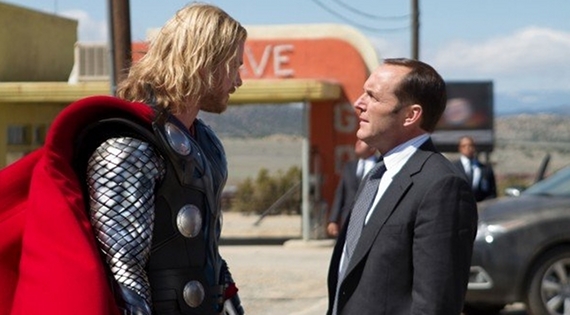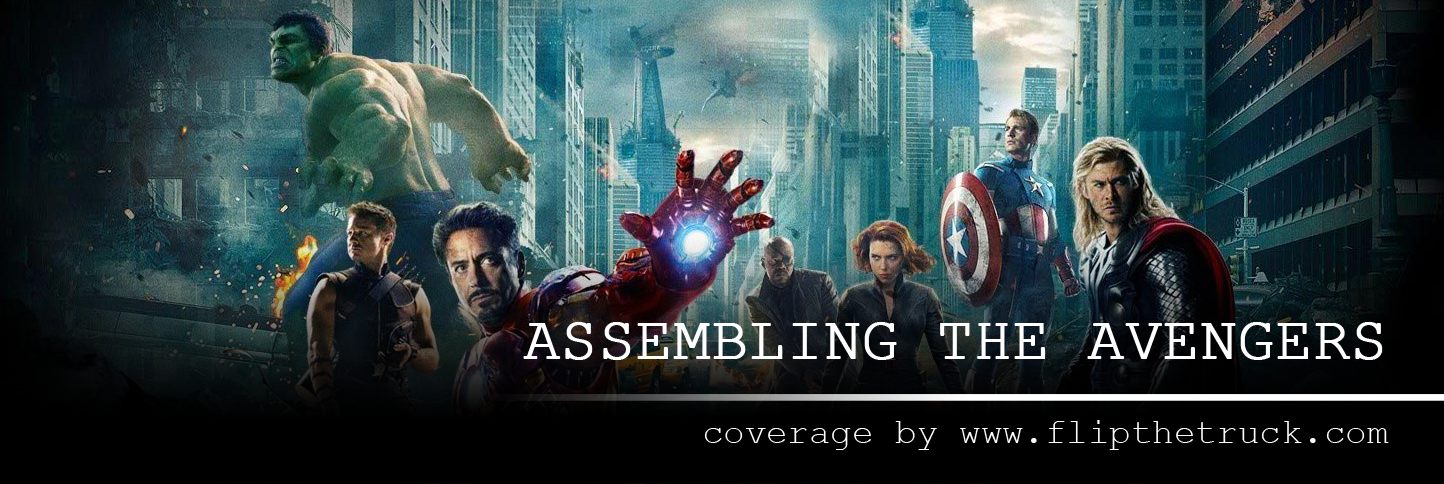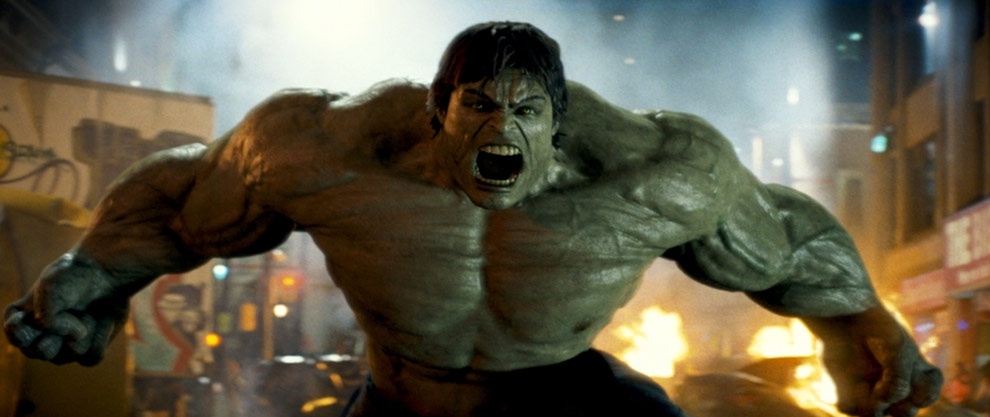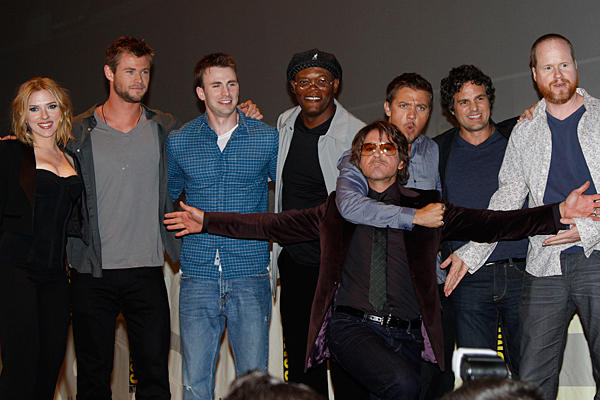This is the first article in the coverage of the movies related to 2012’s The Avengers. The movie hits the screen this week in Austria, Germany and pretty much the rest of Europe. So this week there will be a coverage of the movies leading up to this event, culminating in an Avengers review this Sunday.
To get to the overview click here.
Before we get into the story of the separate movies this coverage will start with the marketing of the movie because the selling of this storyline was a task not easily achieved.
A note about nitpicking:
When it comes to the individual movies there will be a lot of whining, nitpicking and complaining. The thing to consider here is that when I will get to the movies I will dissect them as stories with the intention to bring the best possible storyline out of the source material.
This will mean a lot of criticism for the Tie-Ins featured in the individual movies – which I know are necessary for the advertisement but don’t work on a story-level. So before I rant about what might and might not work let’s start with the marketing of this project.
The Brand Stark
Opening the can of stories with Iron Man was a very wise decision because of the fact that Iron Man is the most grounded character. Very similar to Christopher Nolan’s Batman approach the initial Iron Man spent a lot of time explaining the mechanics of this world, creating a make-believe superhero atmosphere.
The success of this movie probably had a very large impact on the entire project. This can be most notably seen in the focus on Robert Downey Jr.
Also both Trailers for Thor and Captain America featured references to the name Stark. When I was in cinemas watching the trailer for Captain America a friend of mine who had only seen Iron Man 1 and 2 immediately recognized the name Stark. The same happened when I watched the Avengers trailer before waiting for the movie to be over. Initially the audience was just looking at another comic movie but when the tower with the name Stark appeared people started chatting about Iron Man.
Iron Man is clearly the public flagship for this movie and one can see the brilliance in the strategy of releasing solo-movies first: they serve as a sort of market research to judge the popularity of each character.
Depending on the success of the movie Marvel can see in advance what heroes will resonate in the final movie before risking putting together five actors we have never seen in those roles.
Storywise the project has also been filtered through the years of comic publications. With the comic series The Ultimates Marvel retold the formation of the Avengers, distilling the stories from years of comics, keeping what has worked before and remixing the characters into one thought out continuity.
This continuity was pretty much the blueprint for the Marvel cinematic universe (referred to as MCU). So Marvel already had a proven formula to follow. The fans were immediately on board and provided the free coverage wanting to see what they had read years before in the comics.
The Hulk in the room
The Incredible Hulk was released during the same summer of Iron Man and marked the beginning of Marvel Studios’ movie production. A company that would be able to gain such a reputation it could put “From the Studio who brought you Thor” on the poster. Contrary to marketing ploys like “From the Studio that brought you The Departed” Marvel’s taglines carry a bit more geek-credibility because they only make superhero movies and not a million other ones as well.
Next to Iron Man Hulk was the most “grounded” of the characters as both characters are based on super exaggerated science – it is a stretch to make it credible but still not as far of a stretch as the god of thunder or a supersoldier who punches Hitler.
But Hulk was not an entirely new concept – the 2003 adaption by Ang Lee had been a big boxoffice disappointment and the critical reception wasn’t overwhelming either. On the other hand it was an established brand, which counts a lot these days. I know many people who have only seen Iron Man and Hulk because 1) Iron Man had such a broad appeal and 2) Hulk was something established.
For the fanbase there were allusions to pretty much all upcoming movies – a supersoldier program, a big thunderstorm that enraged Hulk and most importantly a cameo by Robert Downey Jr.. My cousin who has only watched those two movies was curious about this crossover because “at the end of Hulk Iron Man appeared”.
Introducing a last minute cliffhanger while cheap as a cliffhanger in True Blood still works and was a step up from just the easter egg that was Samuel L. Jackson at the end of Iron Man 1.
The sacrificial lamb
There are always victims of great plans, there have to be cutbacks when making such a gamble as Marvel made. And Iron Man 2 became that victim. It was the movie to kick in the second phase of the Avengers. Relying on the immense popularity of the first installment Iron Man 2 was rushed to get released just 2 years after the original film – despite Favreau wishing for a 3 years gap.
Recycling everything that worked in part 1 Iron Man 2 was designed to repeat everything people liked about the first one but make it bigger and shove in what fans wanted to see. This meant plotline over plotline and a string of cameos. Trying to balance all those things the film suffered a similar fate to the last Spider-Man by Sam Raimi but more on that in the film-reviews.
 Casting Scarlett Johansson amped up the sex appeal and catered to both drooling fanboys and the Transformer-crowd. Sparkle in as many nods to upcoming movies, ride on an aggressive marketing campaign with an AC/DC best-of album (the very thing AC/DC refused to do for a long time) and you get a movie that is more successful than the first one (worldwide speaking) without many risks.
Casting Scarlett Johansson amped up the sex appeal and catered to both drooling fanboys and the Transformer-crowd. Sparkle in as many nods to upcoming movies, ride on an aggressive marketing campaign with an AC/DC best-of album (the very thing AC/DC refused to do for a long time) and you get a movie that is more successful than the first one (worldwide speaking) without many risks.
Of Gods and Men
Having established the flagship with Tony Stark the challenge was now to adapt the two more curious heroes. Firstly Marvel had to sell a movie about Gods. On paper Thor was probably the most troublesome because of his nature. He is the polar opposite to Tony Stark the real life billionaire who similarly to Batman has money listed under superpowers. Thor is a demigod who is rotating a hammer and speaks a very old fashioned English.
As said before the framework was already there by the comic incarnations so Marvel had a plan on how to make Thor relatable. This included changing the script from 100% Asgard to 50% of gods and 50% of men. Also the trailer prominently featured references to the brand Stark (see the Brand Stark) and showed a lot of Coulson who has been in the background in the first two Iron Man movies – not that it would immediately turn Thor into a smash-hit. But it raised awareness and despite my doubts about this tactic it would pay of (see The Final Onslaught).
 The success of Thor probably influenced a lot of the story and you can bet everything that had Thor been a dud Loki would not be the villain in The Avengers. The Marvel market research was working. Slowly testing what people liked, what they didn’t before actually tackling the Avengers.
The success of Thor probably influenced a lot of the story and you can bet everything that had Thor been a dud Loki would not be the villain in The Avengers. The Marvel market research was working. Slowly testing what people liked, what they didn’t before actually tackling the Avengers.
The outline for Avengers went clearer and clearer and because of that Thor’s after-credits-scene was less than an easteregg but a preview of a plot point for the next movie which enforced the feeling that there was some kind of ongoing story.
Also on the DVD/Blu-Ray market the products started with cross-references, including short movies and “special previews” of the already hyped Avengers movie. A trend that would continue with…
The Hero with a Gun
The last piece of the puzzle arrived last summer in the form of Steve Rogers – better known as Captain America. Now contrary to the impression you get from the Avengers posters Steve Rogers is/should be the main character, the hero in this new world. But before one could start thinking on how to connect everything Cap’s story had to be told.
With the formula that has aided the previous Marvel movies Captain America: The first Avenger was a pretty simple movie with little risks. But just making another movie with nudges and winks was not enough. The title itself screams the true intention: Captain America: The Avengers prequel movie. Marvel had to make sure that now even the average movie goer would start to notice that something was coming because the average movie goer probably never thought about the reason why a pirate appeared in Iron Man 2.
But as I said the awareness had to be pushed beyond winks which is the reason Captain America had not only the black pirate at the end – it had no ending at all. It culminated in a giant cliffhanger very much like a TV-Pilot ends with a big “what the hell”-moment before cutting to black and left us waiting for…
The Final Onslaught
The pieces now were all in place. Not only had each movie fared pretty good in terms of boxoffice, the critical reception was good and the fans were eating it up – all Marvel now had to do is keep the machinery going and finally put together a movie that had been researched and field-tested for four years.
That the movie would be a success was already a given. Worst case it would make numbers slightly below Iron Man 2 – after all this movie has the starpower of Robert Downey Jr. and the public loves Iron Man (seriously, who doesn’t?). The villain was the best critically received villains, all one needed was a plotdevice to kick in the story which they had conveniently placed in Captain America beforehand.
The question was how to market it to push the success further. The geek community is already in love with this movie – there was such a longing for a shared movie universe that the biggest percentage of the fans was already behind it, going into unnecessary lengths analyzing and rewatching the same movies. Giving the director’s chair to Joss Whedon was a fantastic marketing stroke. Whedon is considered to be the geek-god being responsible for the television series Buffy and Firefly. Plus he is an established Marvel comic writer so you can further sell the “we are true to the source angle” that fanboys eat up more than any ballsy and innovative idea.
The Avengers marketing stopped being a comic-book-fan-only marketing. It pretty much evoked scenes from other action movies. On the same side it just showed the fans what they had longed for: heroes sharing the same frame.
Add to that the deal with Disney and an invasion of merchandise. Contrary to marketing disasters like John Carter this movie hits with all the guns – it was time to stop mobilizing the already loyal fanbase and instead cater to the rest of the movie audience.
It was at this point that I realized the incredible power of brand recognition. The movie critic Dr. Mark Kermode has argued a lot about that sometimes it is less about the movie but about the hype people associate with it – the marketing that sells this movie as more than 2 hours of entertainment but an “event movie”.
And Avengers fits Dr. Kermode’s bill in every way. It is more than a movie, it is an event. Even people who have not seen any of the Marvel-movies have seen the posters for Thor and Captain America. And with those posters in mind they now see that those movies are all coming together. Even if they have no clue who or what Thor or Captain America is they know that they are established brands and that those blockbusters are now joined. To them it is less about the story idea than about the novelty, the gimmick of watching five movies in one movie.
Whether it will be more than “wouldn’t it be awesome if they would fight together” has yet to be shown but what has already been proven is that from a marketing standpoint Marvel has done everything right and will gain enormous profits from this project.
Now that we have studied the marketing it is time to get to the actual movies and the question:
What is the story they tell and how can they profit from a team-up movie?
We will start with Captain America: The First Avenger.








Schreibe den ersten Kommentar